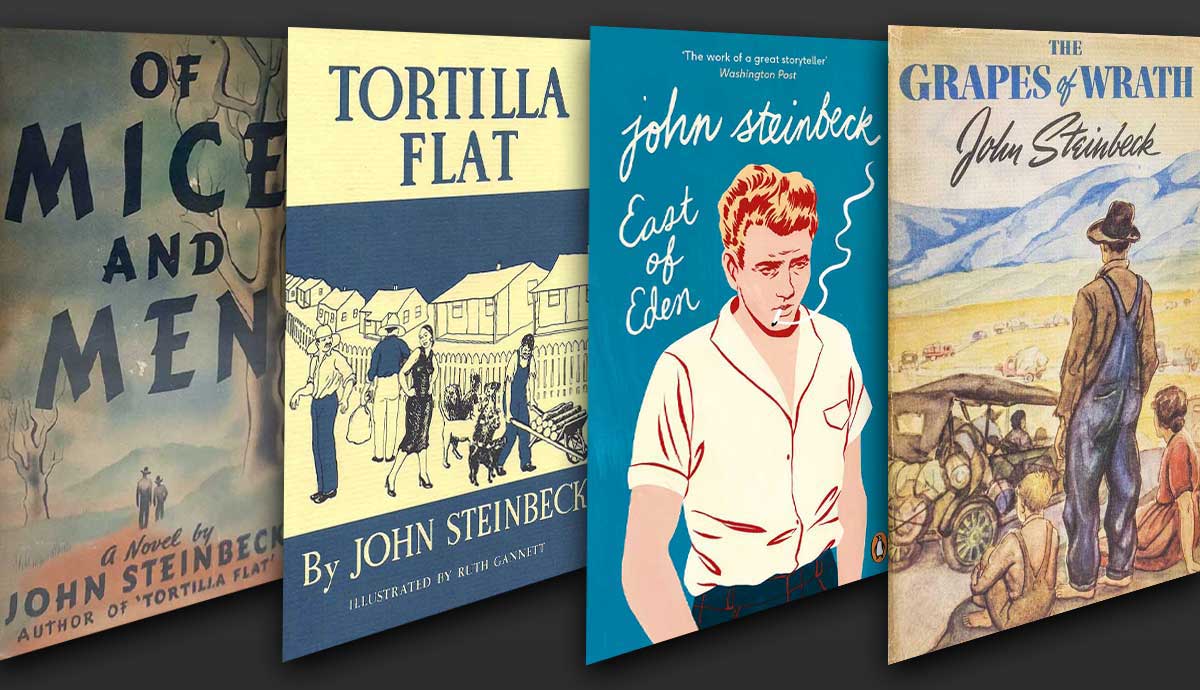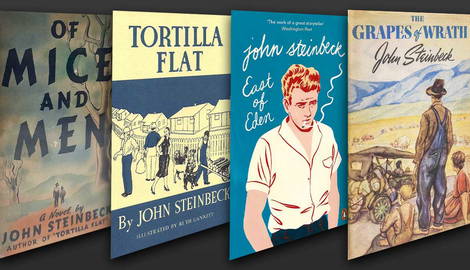
When John Steinbeck rose to accept the prestigious Nobel Prize in Literature in 1962, someone dared to ask him if he felt deserving of it. Humble as ever, he replied with a modest “no.” Unfortunately, many contemporary critics shared his opinion, demonstrating an obscene underappreciation of one of the greatest American authors of all time. Later revelations unveiled that Steinbeck’s award was a compromise choice in an underwhelming year. Nevertheless, his time was undoubtedly on the horizon.
Who Was John Steinbeck?

Born in 1902 in Salinas, California, John Steinbeck grew up on a farm surrounded by immigrant workers. Graduating from high school in 1919, he pursued English Literature at Stanford University for over five years, though he did not obtain a degree. In 1928, he married his first wife and took on various odd jobs to make ends meet. His parents offered accommodation and financial support whenever his funds ran low, which allowed him to concentrate on his writing.
In 1930, Steinbeck met Ed Ricketts, a biologist and ecologist who would arguably have the most significant impact on Steinbeck’s career. The two developed a strong friendship grounded in their mutual love for literature and the arts. Steinbeck was also eager to absorb knowledge about biology. Frequently embarking on trips together to collect specimens, they contributed to Ricketts’ publications by selling and cataloging the gathered materials.
Steinbeck published his first novel, Cup of Gold, in 1929, but it took six more years for him to achieve success as a writer. His breakthrough came with Tortilla Flat, which won a local California literary award. Steinbeck continued to produce one great novel after another. His timeless classics include Of Mice and Men, The Grapes of Wrath, and East of Eden. Among Steinbeck’s extensive bibliography which features more than 20 books, these are the ones you should definitely read.
4. Tortilla Flat (1935)

John Steinbeck’s success and fame as a writer didn’t come overnight. Before the publication of Tortilla Flat in 1935, he had already written and published four other novels with very little success. This was the first of Steinbeck’s novels set in Monterey. It tells the story of a group of young men dubbed the paisanos. Danny, Pilon, Pablo, Jesus Mario, and Big Joe are drunkards and delinquents who are also portrayed as good-natured.
During World War I, these men enlisted in the army, but before they could see action, they returned to their hometown to find it seemingly unchanged, except for one significant difference. Danny’s grandfather had passed away, leaving him in possession of two houses.
Danny lived in one and rented the other to a friend, but when that friend couldn’t afford the rent, the rest of the group gradually moved in. One night, after consuming a generous amount of wine, Danny’s friends accidentally burned down the house. Although initially furious, Danny eventually allowed them to join him in the other house. This event would mark the beginning of their adventures.
Steinbeck often made a comparison between the paisanos of Tortilla Flat and The Knights of the Round Table. The paisanos were similarly adventurous but radically more mischievous. While the novel has an amusing and casual tone to it, as the story progresses, the events get more serious and more tragic. The novel culminates with an unexpected ending.
This atmosphere reflects the novel’s era and the transition from the ease of life to the challenges of the Great Depression. The emotional trajectory of the novel also serves as a symbolic representation of the characters’ growth. Youth is characterized by simplicity and forgiveness, but as individuals progress toward adulthood, their ease gradually fades away.
3. Of Mice and Men (1937)

Two years after the success of Tortilla Flat, John Steinbeck managed to write what is perhaps his most iconic work. Of Mice and Men was published in 1937 to a fantastic reception. The novel is set in Central California during the Great Depression.
The plot centers around two field workers who, in the midst of the Great Depression, leave their homes in search of employment. We meet George who is physically weak but intelligent, and Lennie, physically strong but mentally challenged.
Of the two, Lennie stands out as the most intriguing character in the story. Despite his intimidating physique, his kindness is portrayed more often than his menaces. Any harm he inadvertently causes is depicted as an unfortunate consequence of his mental deficiencies. When he accidentally kills an animal while petting it, the reader feels more sorry for him than for his victim. His tendency to treat beautiful things with affection extends to women as well. Despite his harmless intentions, women can’t help but feel terrified of him, seeing his actions as potentially harmful. The first time this occurs, Lennie and George have to flee, while the second time results in a mob going after them.
Throughout the novel’s events, Lennie, George, and the characters they befriend share a singular dream. Lost in the instability that came with the Great Depression, these displaced workers yearn for a home. They dream of a ranch where they would be able to grow their own food and lead stable lives. In the end, when their dream becomes unattainable, death appears as a more merciful fate.
2. The Grapes of Wrath (1939)

Of Mice and Men and The Grapes of Wrath might be seen as Steinbeck’s most popular works, but The Grapes of Wrath is the book that is taught in most schools. All around the world in literature courses, you’ll find students discovering Steinbeck’s epic and analyzing the story of solidarity and unity in the face of disaster. Unlike the last two mentioned works, The Grapes of Wrath begins outside of California, in Oklahoma, and gradually makes its way to the Golden State.
In the book, we meet Tom Joad, who had killed a man in his past. After serving his sentence, he is released amid the Great Depression. Along with the former preacher Jim Casy, Tom makes his way back to his family’s farm. The group sets out on a trip along the famous Route 66, which is filled with migrant workers who warn them that the jobs they’re after no longer exist. Upon reaching California, their real troubles begin. Work is scarce, the locals are unwelcoming, and the pay is low.
Steinbeck witnessed the plight of workers in the Great Depression himself, and the characters of The Grapes of Wrath are a direct manifestation of what he observed in the camps and farms of 1930s California. The Grapes of Wrath won the Pulitzer Prize in 1940 and contributed greatly to Steinbeck’s win of the Nobel Prize in 1962. The book does an incredible job of portraying how a family, and on a broader scale, society, reacts to a disaster. Some seek unity and make efforts to keep their community together, some are solitary and self-centered, while others panic and are unsure of which direction to take.
1. East of Eden (1952): John Steinbeck’s Very Own Favorite

In this novel, we return to Steinbeck’s Central California for an epic tale about love, guilt, and freedom. Steinbeck considered East of Eden to be his magnum opus. He once even said that every bit of writing he had done before this book was mere practice. Audiences share his appreciation of this novel, as it remains one of his most popular works.
East of Eden is rich in Christian imagery, so much so that even the title refers to the Book of Genesis. The novel follows two families, the Trasks and the Hamiltons, who are fatefully forever intertwined. Throughout generations, history repeats itself as they reenact the story of Adam and Eve and other landmark religious events.
While many of Steinbeck’s works were adapted into the silver screen, none would become as successful as East of Eden. When Elia Kazan took the director’s chair in 1955, three years after the novel’s initial publication, he made a timeless masterpiece. Although the film adaptation only covers the fourth part of the book, James Dean managed to deliver the most iconic performance of his short-lived career.










